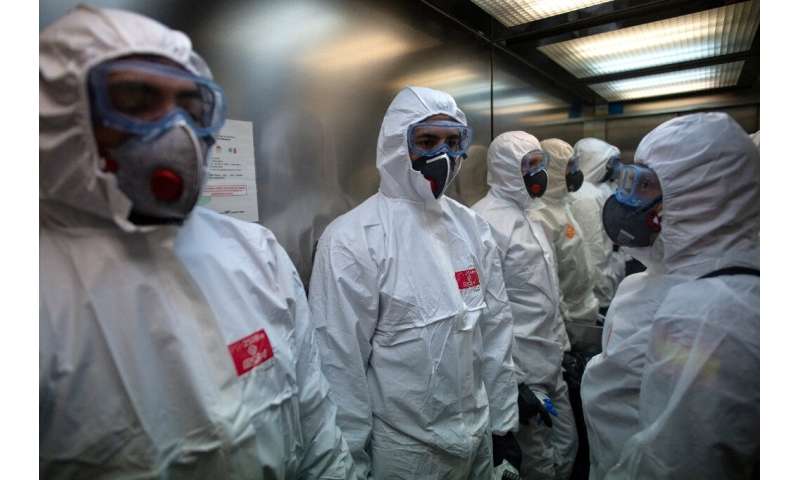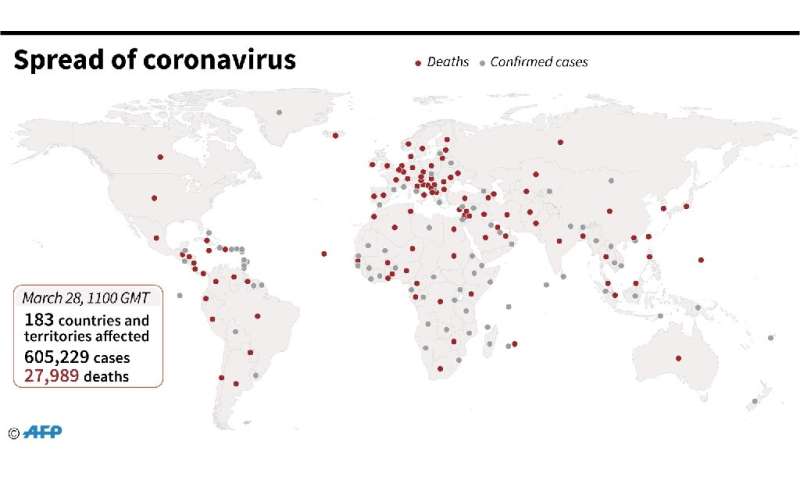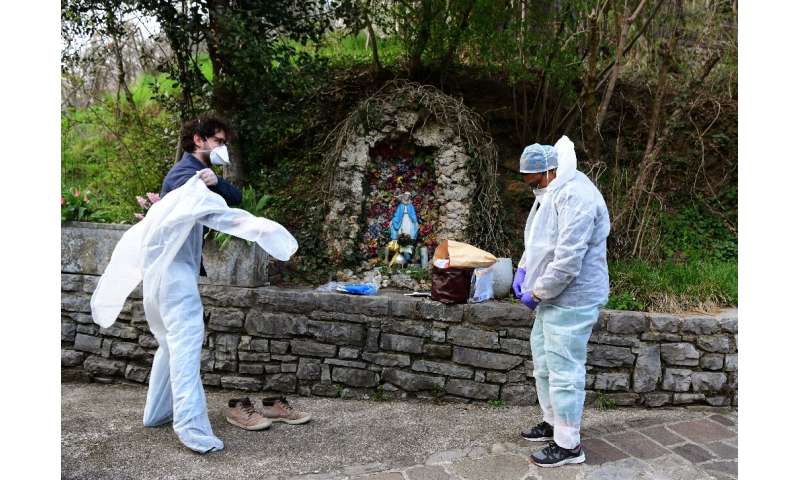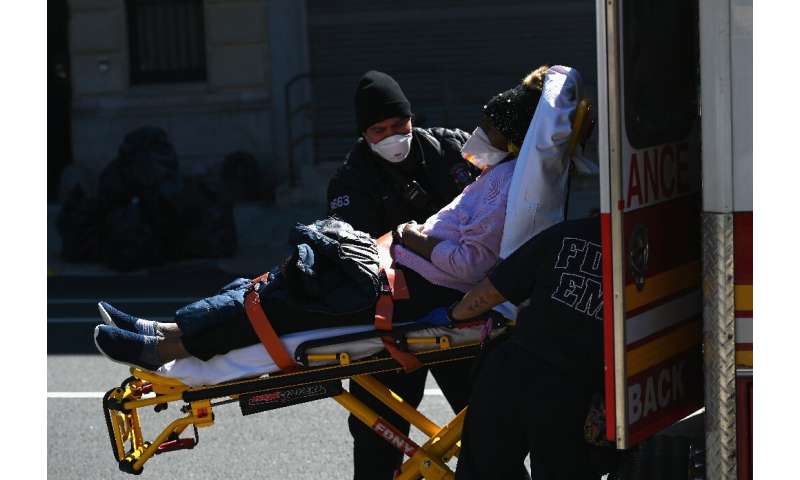
The death toll from the coronavirus epidemic in Europe surged past 20,000 on Saturday, even as the Chinese city where the outbreak began cautiously returned to life.
Europe and the United States are facing a staggering increase in new cases of COVID-19—despite perhaps a third of humanity now living under lockdown.
The grim new death numbers were reported after the IMF confirmed the world economy has plunged into a historic slump and the US invoked wartime procurement powers.
On Monday, Russia will become the latest country to “restrict traffic” across its borders in an attempt to slow the pandemic’s spread, according to a decree on the government website.
More than 600,000 cases of the novel coronavirus have been officially recorded around the world since the outbreak began, according to an AFP tally.
Variations in testing regimes mean the true number is likely far higher, and confirmed deaths are mounting.
Europe is now the worst-hit continent with 20,059 deaths from 337,632 reported cases. The COVID-19 disease has killed 9,134 in Italy and 5,690 in Spain.
France has seen close to 2,000 fatalities while the British toll passed 1,000 on Saturday.
Elsewhere, Iran announced 139 more deaths and India sealed off a dozen Punjab villages that had been visited by a guru now known to be infected and a possible “super-spreader”.

And, in South Africa, Johannesburg police resorted to rubber bullets to enforce social distancing on a crowd queueing for supplies outside a downtown supermarket during a national lockdown.
The United States now has the world’s highest number of COVID-19 cases but per capita European nations are still the worst hit, with emergency services across the world struggling to cope.
Wuhan partially reopens
However, two months of almost total isolation appear to have paid off in China’s Wuhan, where the virus first emerged, which partially reopened.
Since January, residents have been forbidden to leave, with roadblocks installed and millions subjected to dramatic restrictions on their daily life.
But on Saturday people were allowed to enter the city, and most of the subway network restarted. Some shopping centres will open their doors next week.

Meanwhile, on Friday, IMF chief Kristalina Georgieva said massive spending will be needed to help developing nations, warning: “It is clear that we have entered a recession.”
In the US, which now has more than 104,000 COVID-19 patients, President Donald Trump invoked emergency powers Friday to force a private company to make medical equipment.
With 60 percent of the country in lockdown, and infections skyrocketing, Trump also signed the largest stimulus package in US history, worth $2 trillion.
‘Enough, enough’
Italy recorded almost 1,000 deaths from the virus on Friday—the worst one-day toll anywhere since the pandemic began.
One coronavirus sufferer, a cardiologist from Rome who has since recovered, recalled his hellish experience at a hospital in the capital.
“The treatment for the oxygen therapy is painful, looking for the radial artery is difficult. Desperate other patients were crying out, ‘enough, enough’,” he told AFP.

Infection rates in Italy are on a downward trend, but the head of the national health institute Silvio Brusaferro said it was not out of the woods yet, predicting “we could peak in the next few days”.
Spain has the world’s second-highest coronavirus death toll and its number of cases jumped to 72,248 on Saturday as the country moves to significantly increase testing.
Smaller Belgium and Luxembourg also saw a steep climb in deaths, with 353 recorded in the former on Saturday—up from 289 the day before—and 15 in the grand duchy, up from nine.
Europe has suffered the brunt of the coronavirus crisis in recent weeks, with millions across the continent on lockdown and the streets of Paris, Rome and Madrid eerily empty.
Meanwhile, other countries across the world were bracing for the virus’s full impact, with AFP tallies showing more than 26,000 deaths globally.
The World Health Organization’s regional director for Africa warned the continent faces a “dramatic evolution” of the pandemic.


Younger patients
In the United States, known infections jumped past 104,000, with 1,711 deaths, according to Johns Hopkins University.
In New York City, the US epicentre of the crisis, health workers battled a surging toll—including an increasing number of younger patients—while struggling with a severe shortage of protective equipment.
“Now it’s 50-year-olds, 40-year-olds, 30-year-olds,” said one respiratory therapist.
To ease the strain on virus-swamped emergency rooms in Los Angeles, a giant US naval hospital ship docked there to take patients with other conditions.
In New Orleans, famed for its nightlife, health experts believe the month-long Mardi Gras in February could be largely responsible for its severe outbreak.
“This is going to be the disaster that defines our generation,” said Collin Arnold, director of the Office of Homeland Security and Emergency Preparedness for New Orleans.
Source: Read Full Article
